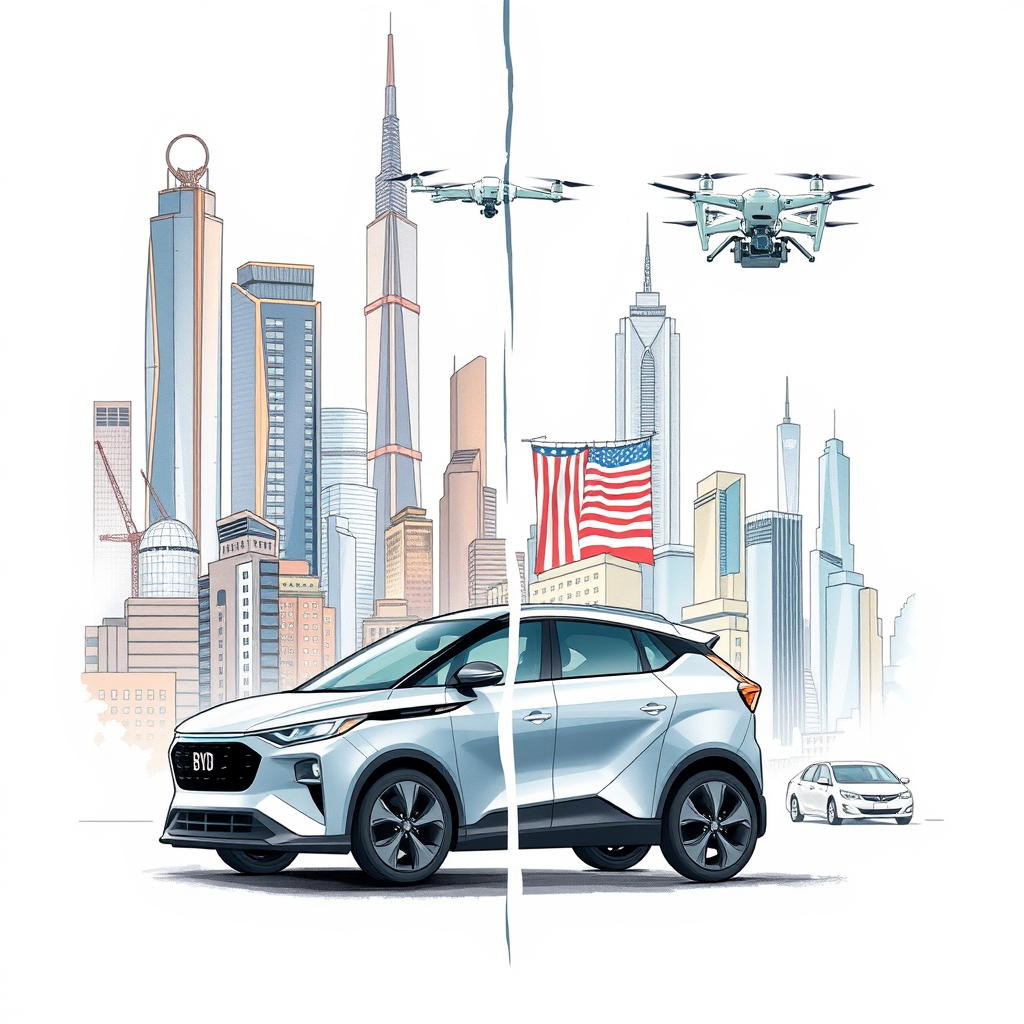China’s EV Revolution Threatens US Tech Dominance

China is rapidly emerging as a dominant force in advanced technologies, particularly in the electric vehicle (EV) sector, and its ambitions extend far beyond automobiles. A comprehensive analysis reveals a strategic push into robotics, artificial intelligence, and even the nascent low-altitude economy – encompassing drone delivery and urban air taxis – fueled by government support, a massive talent pool, and a willingness to embrace innovation.
The nation’s EV success isn’t accidental. It’s a cornerstone of a broader industrial strategy, leveraging shared components and supply chains to propel advancements in related fields. Companies like BYD and XPeng are now venturing into robotics, capitalizing on the technological synergies. This vertically integrated approach contrasts with the U.S., where innovation often occurs in silos.
However, China’s ascent isn’t without challenges. Economic headwinds, including deflation, local government debt, and high youth unemployment, pose significant risks. Strict data regulations and a complex business environment also deter foreign investment. Yet, these hurdles haven’t dampened Beijing’s determination.
The U.S., meanwhile, appears to be adopting a defensive posture, implementing export controls and considering tariffs in an attempt to slow China’s progress. This strategy, however, may be counterproductive. It risks isolating American companies, stifling innovation, and driving China to forge stronger ties with other nations. President Xi Jinping’s recent diplomatic push in Southeast Asia underscores this potential shift.
The contrast in approaches is stark. While the U.S. focuses on containment, China is actively building a comprehensive ecosystem for future technologies. It’s investing heavily in research and development, fostering a culture of innovation, and creating a supportive regulatory environment.
The implications are significant. China is rapidly closing the gap with the U.S. in key areas like AI and semiconductor technology. It’s also emerging as a leader in emerging fields like robotics and the low-altitude economy. According to recent reports, China is now near the lead or better in six out of ten industries of the future.
The U.S. faces a critical juncture. It must decide whether to continue down a path of protectionism and containment, or to embrace a more collaborative approach that fosters innovation and strengthens its global competitiveness. The current trajectory suggests a missed opportunity.
The rise of China as a technological superpower is not inevitable, but the current trends are undeniable. The nation’s commitment to innovation, its massive talent pool, and its strategic industrial policies are creating a powerful force that the U.S. can ill afford to ignore. The question is not whether China will become a technological leader, but how quickly, and what role the U.S. will play in this evolving landscape. It’s a wake-up call for American policymakers and businesses alike.